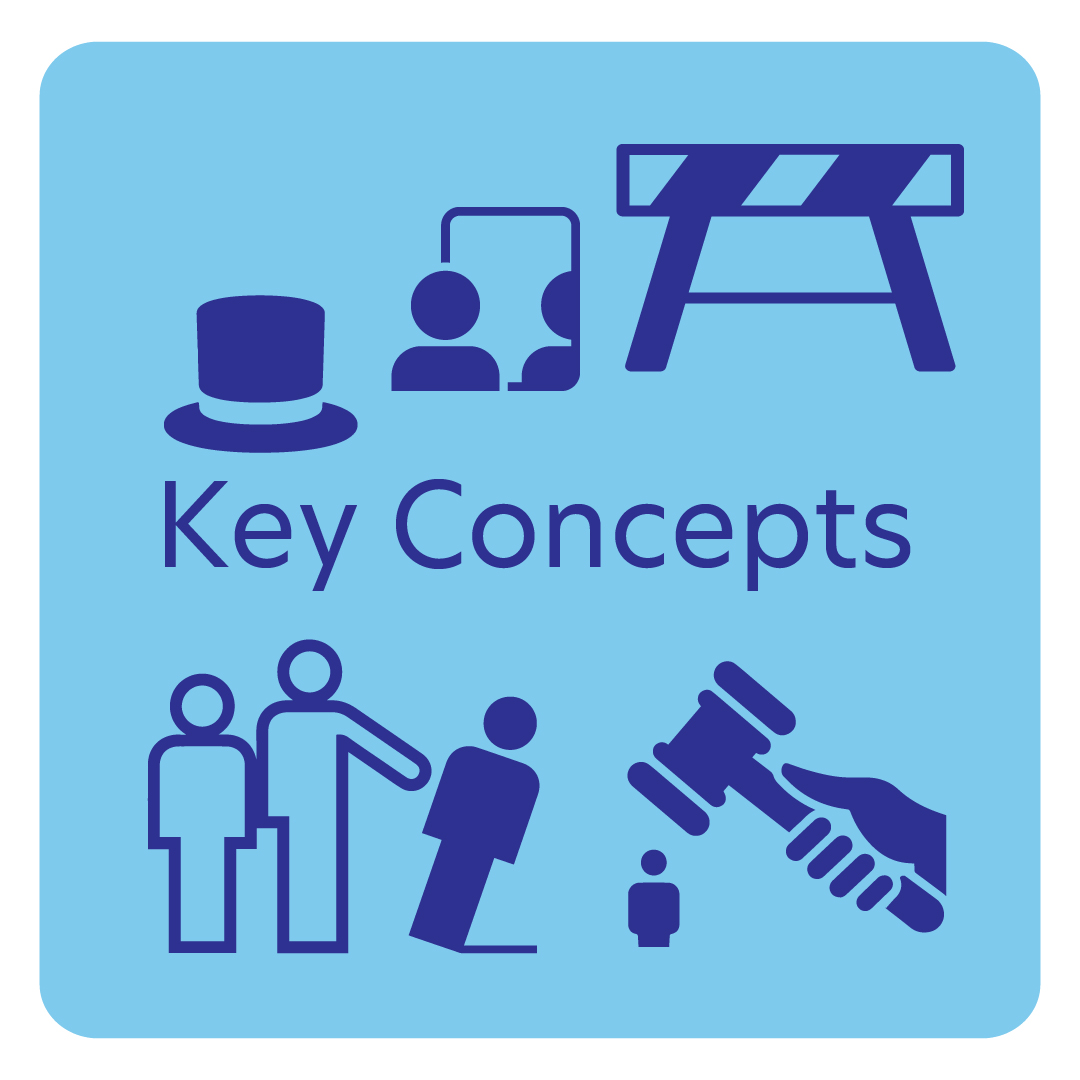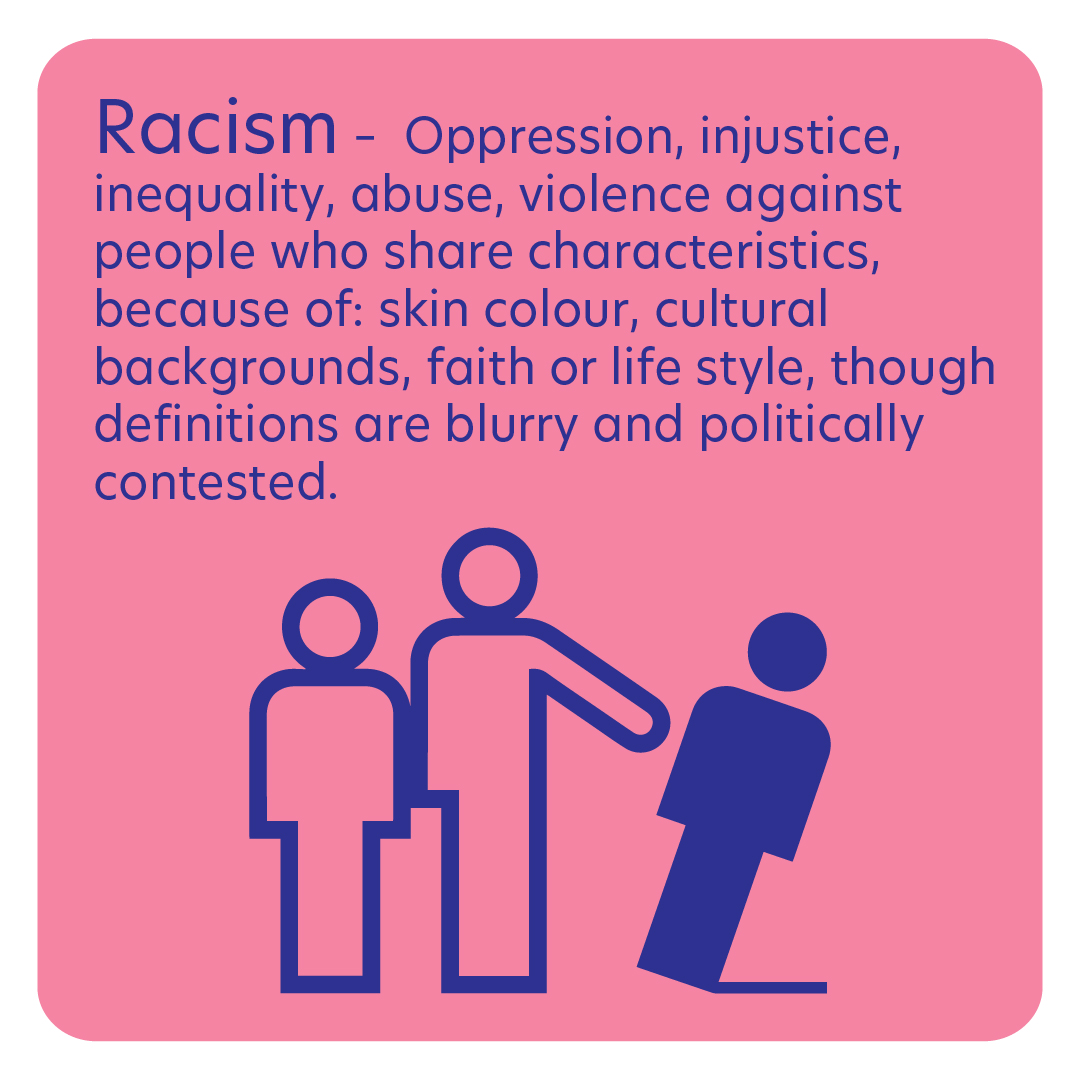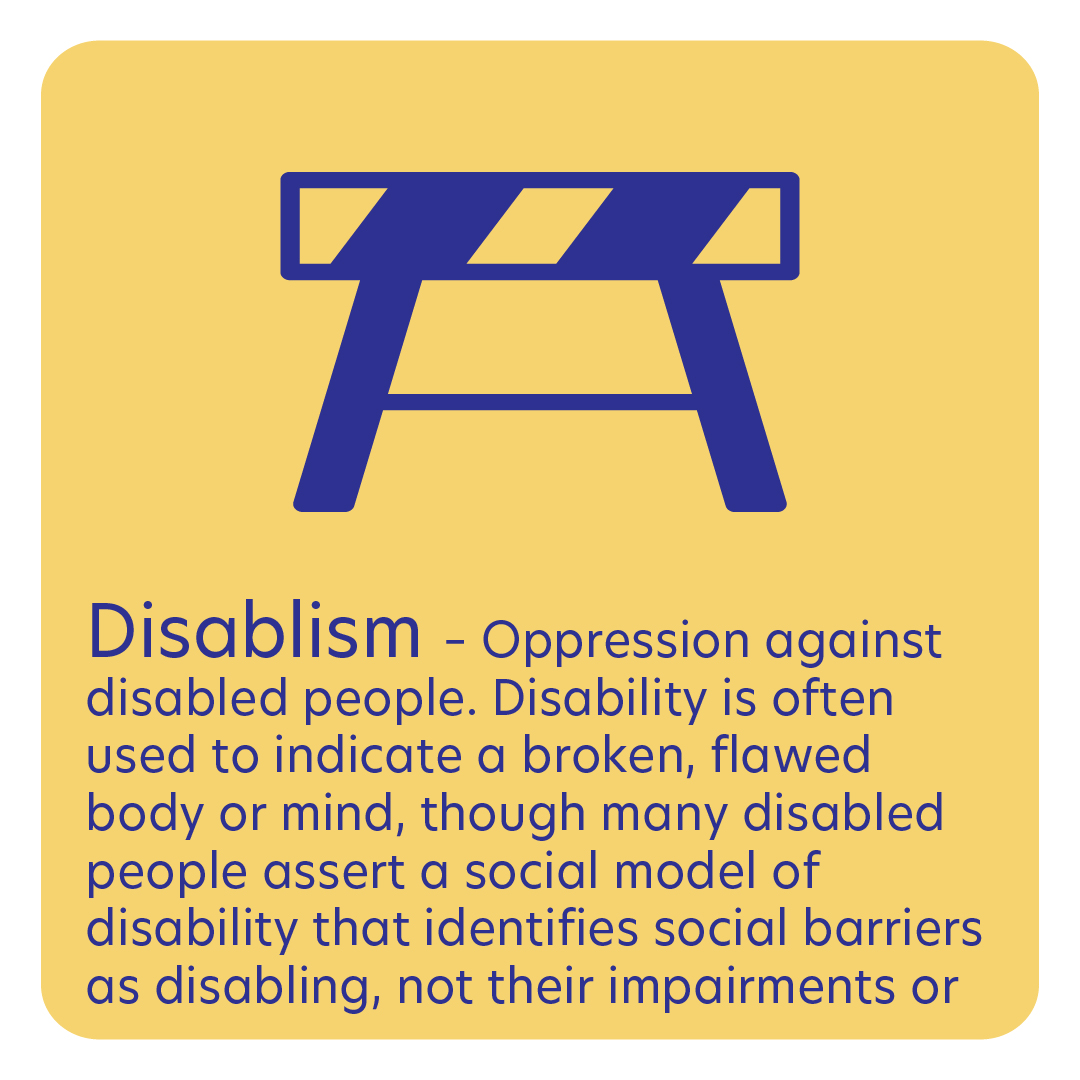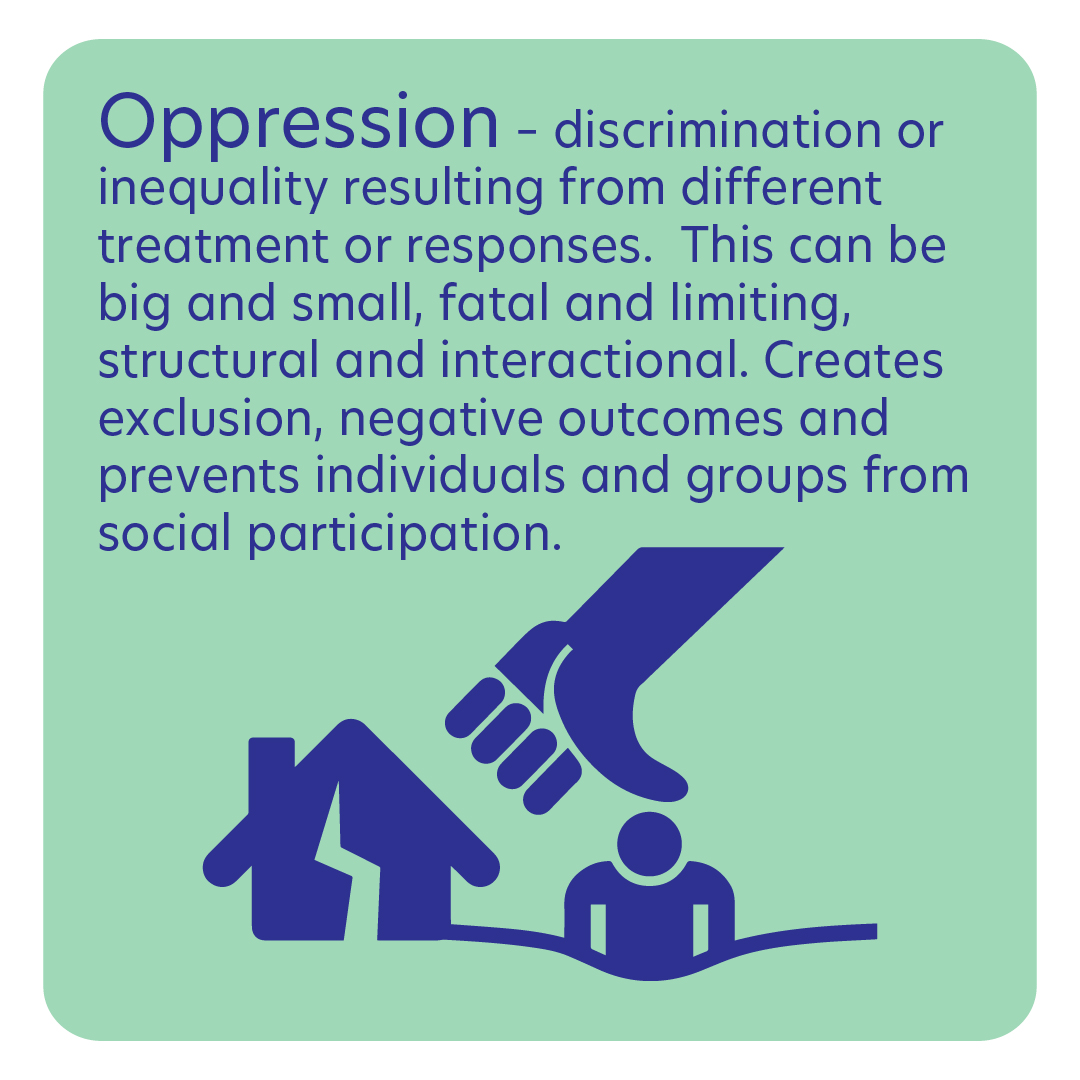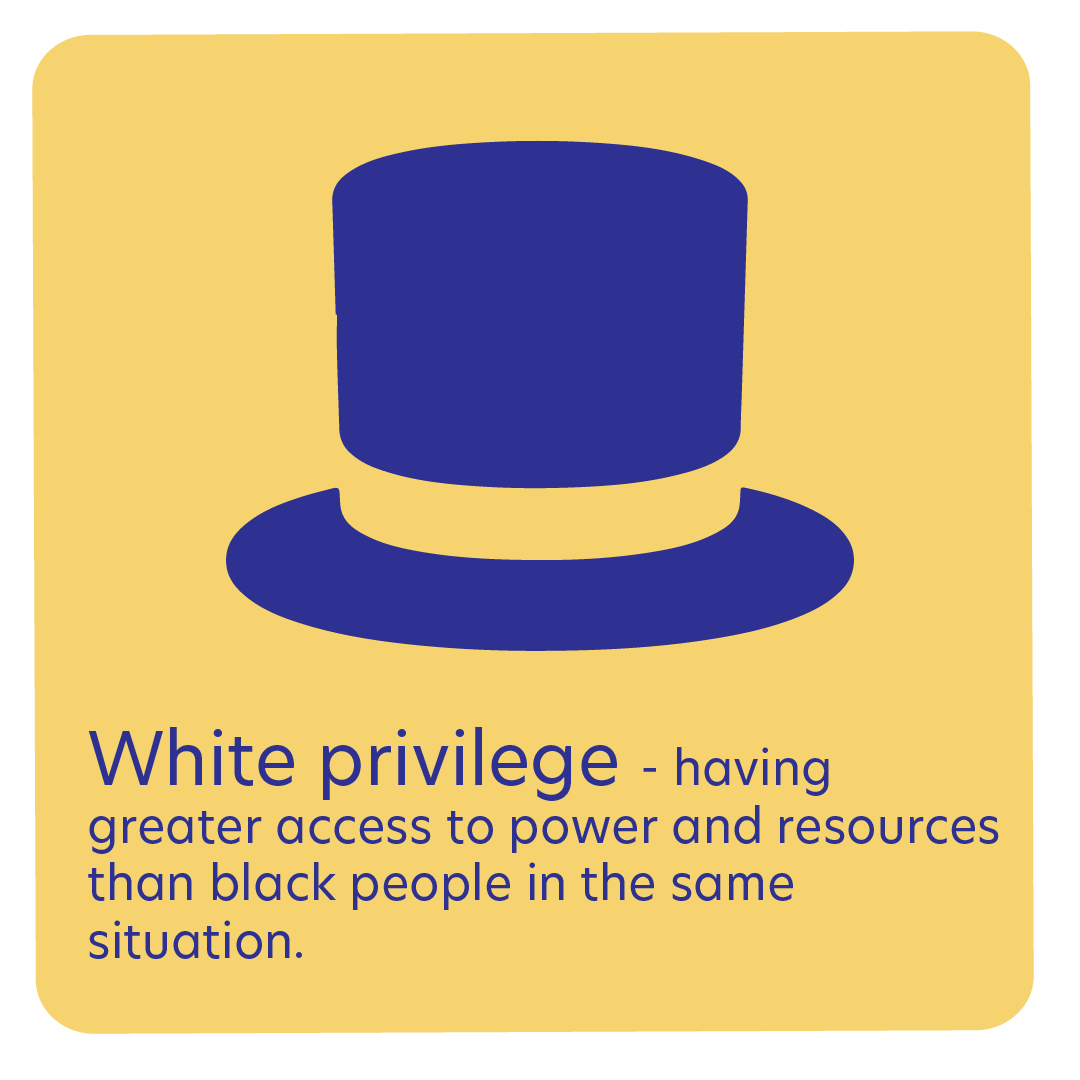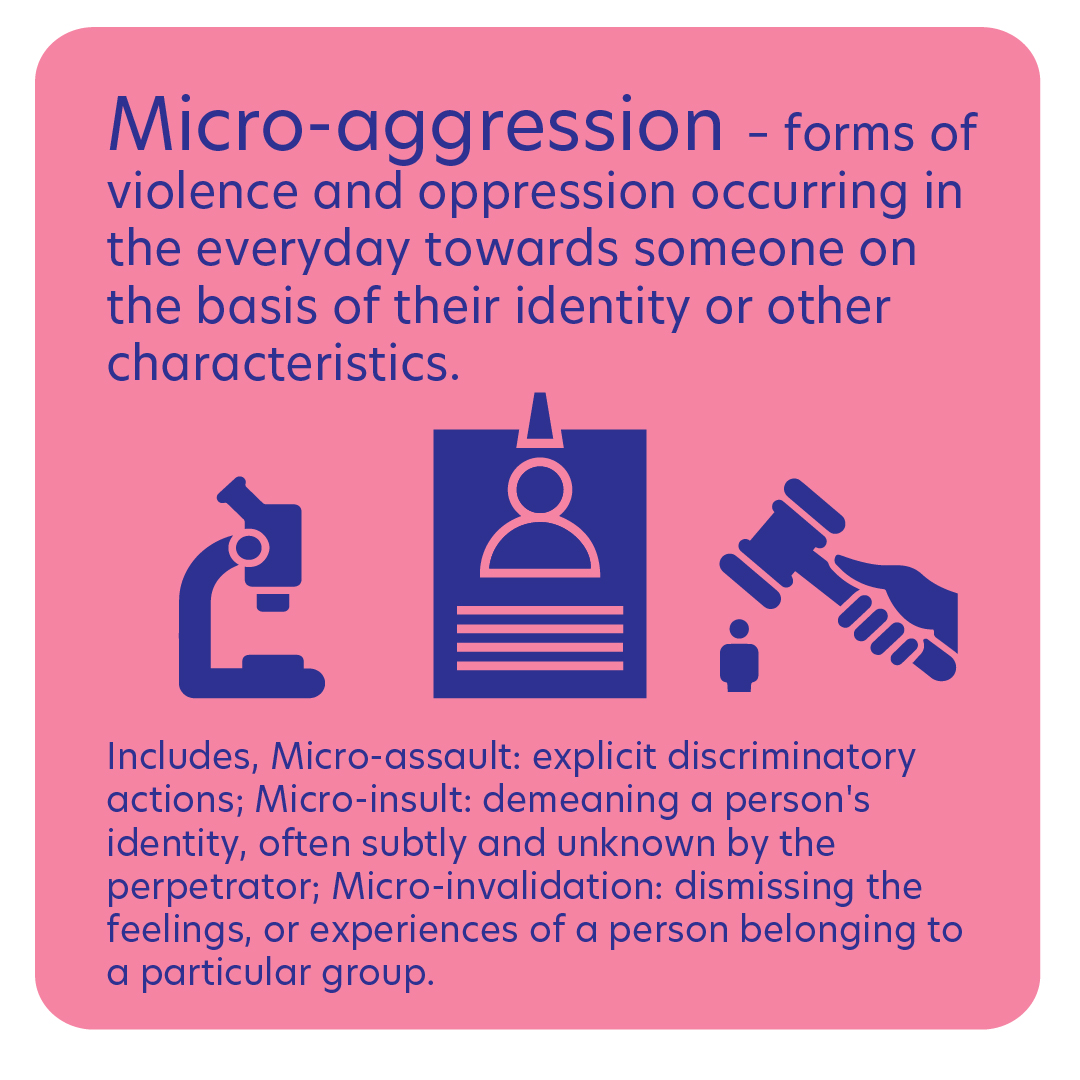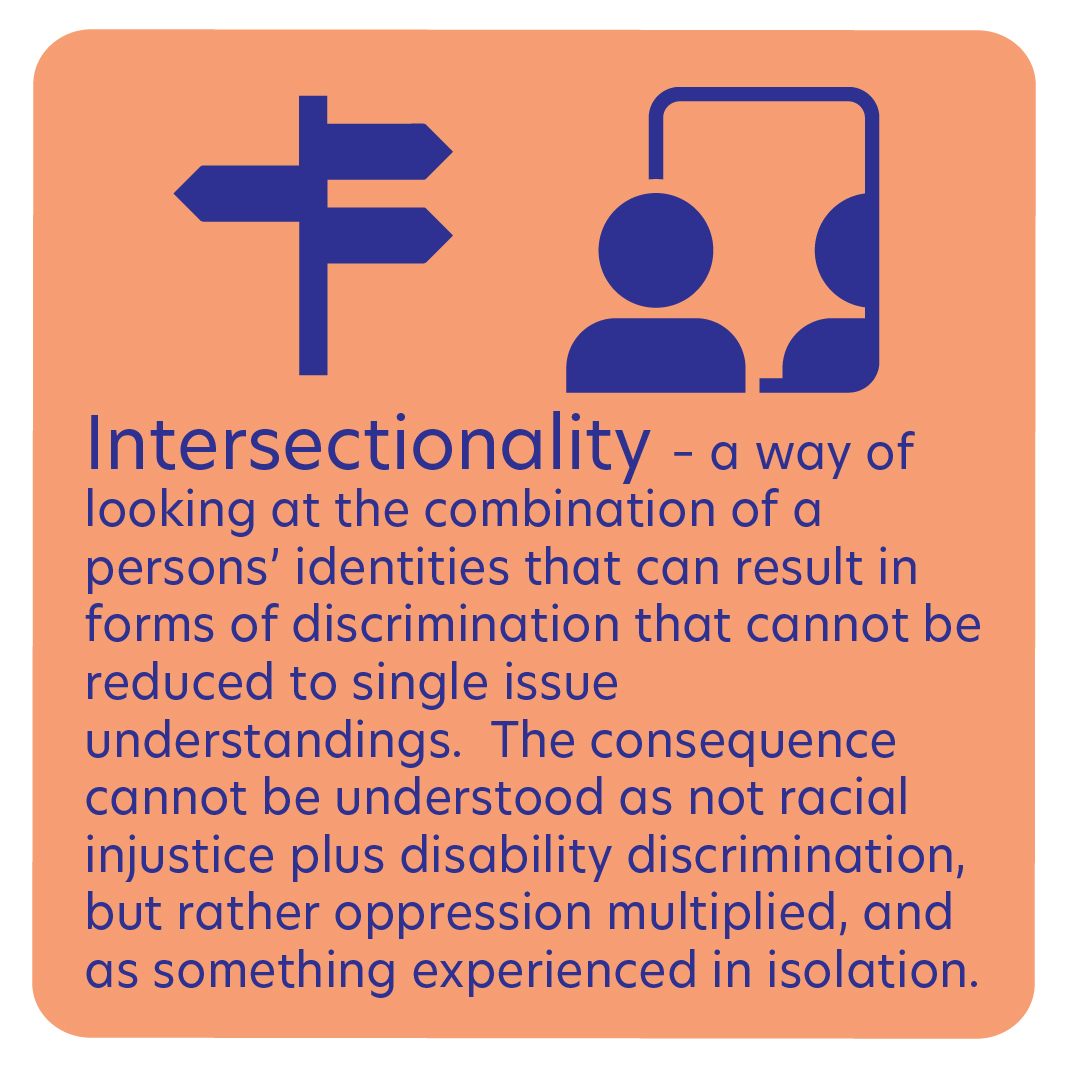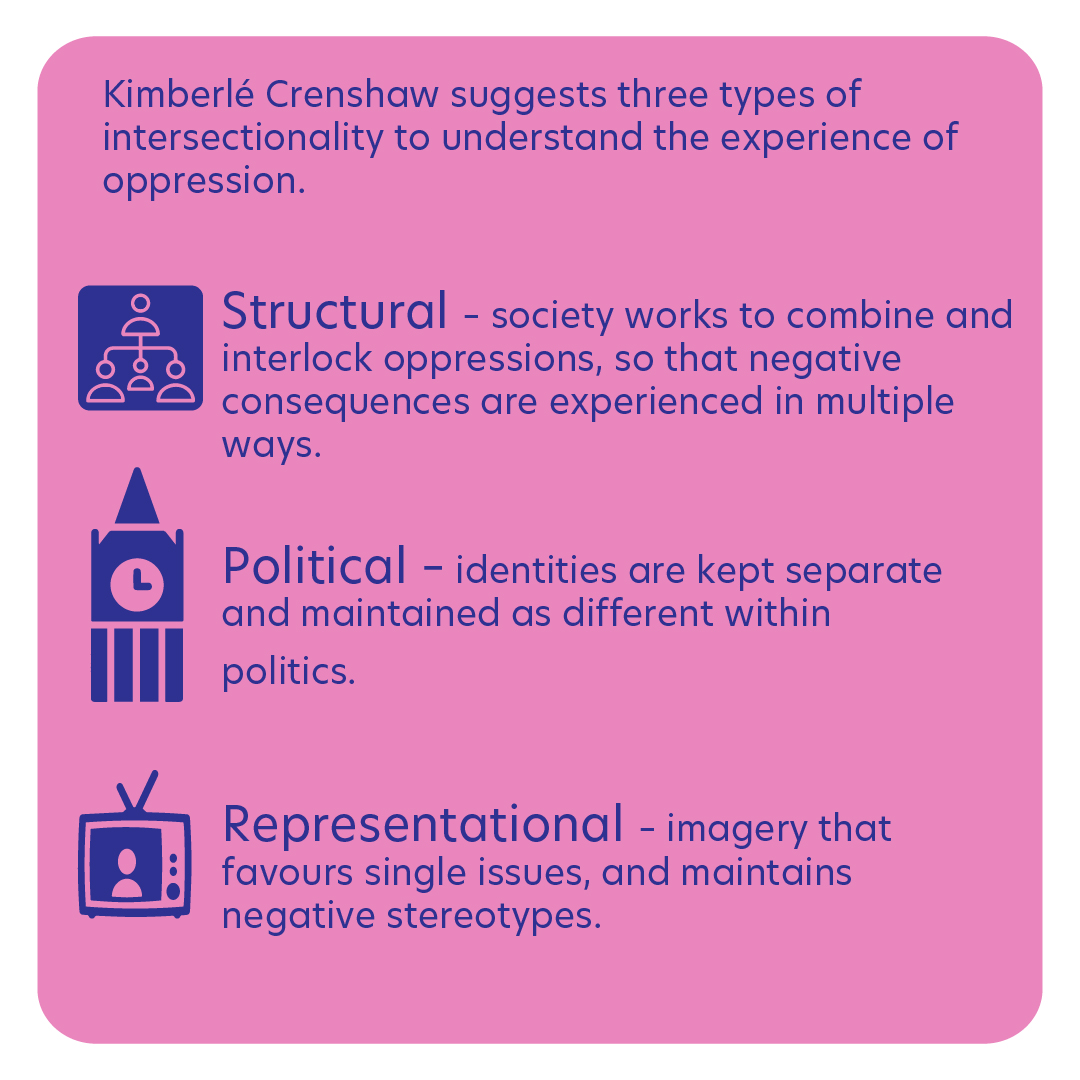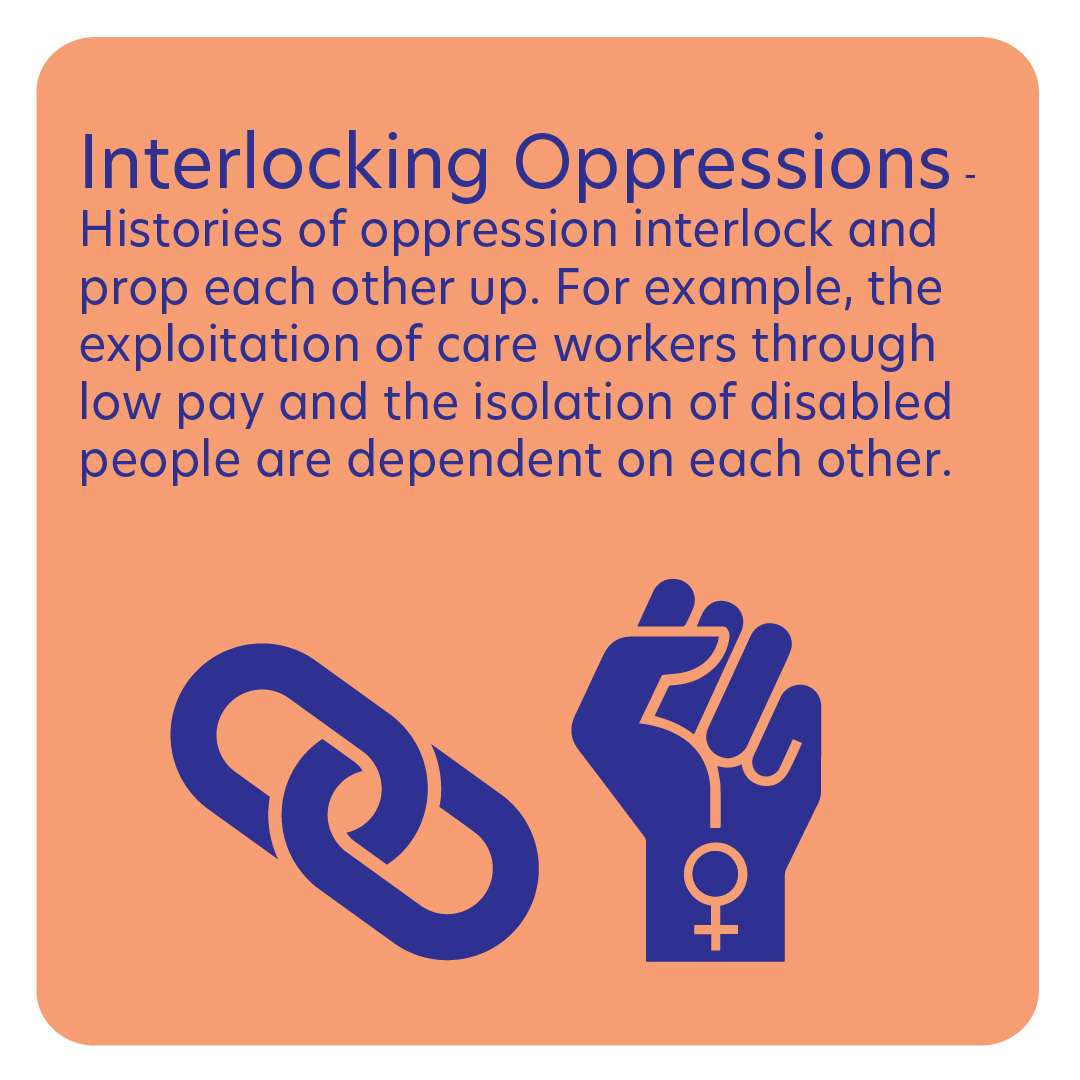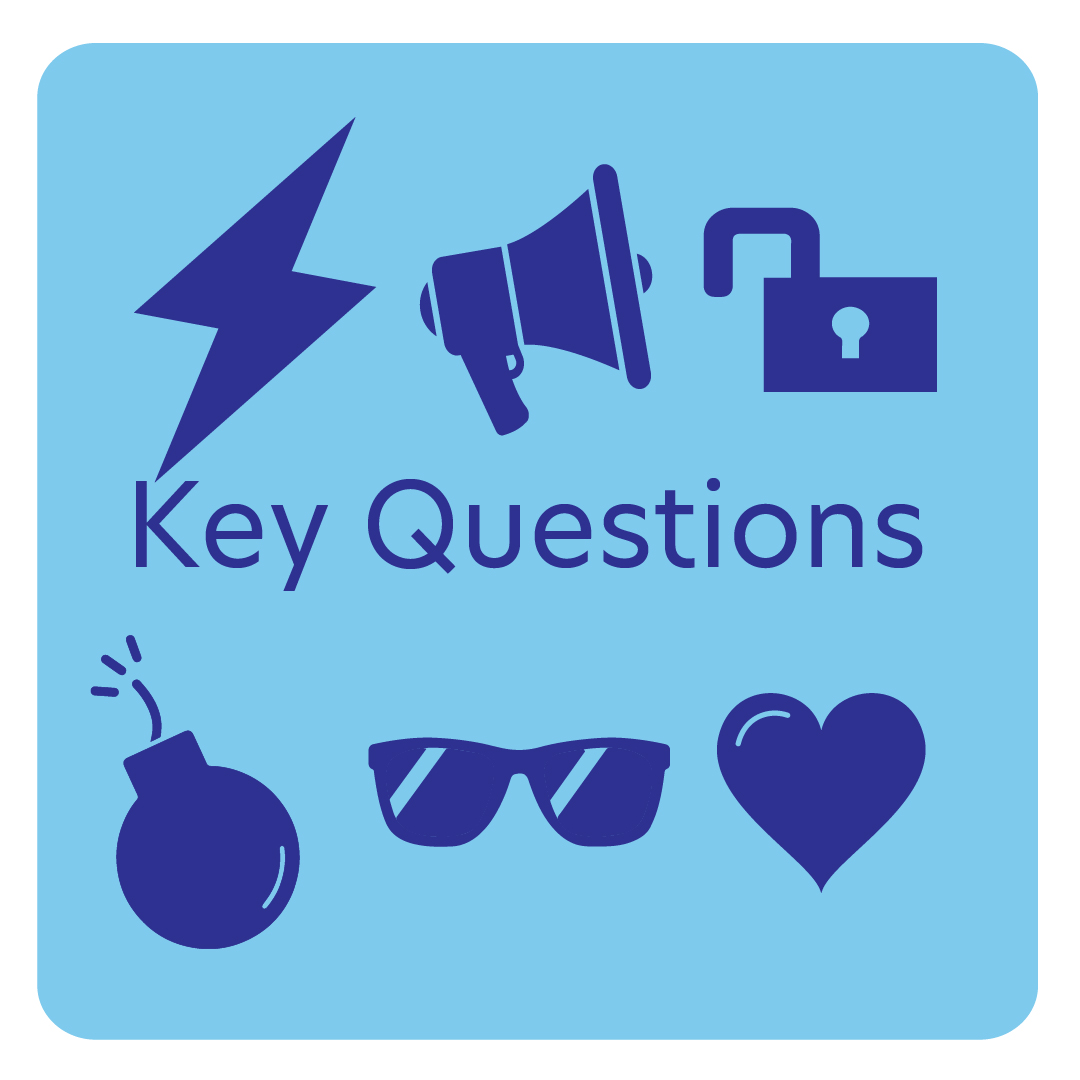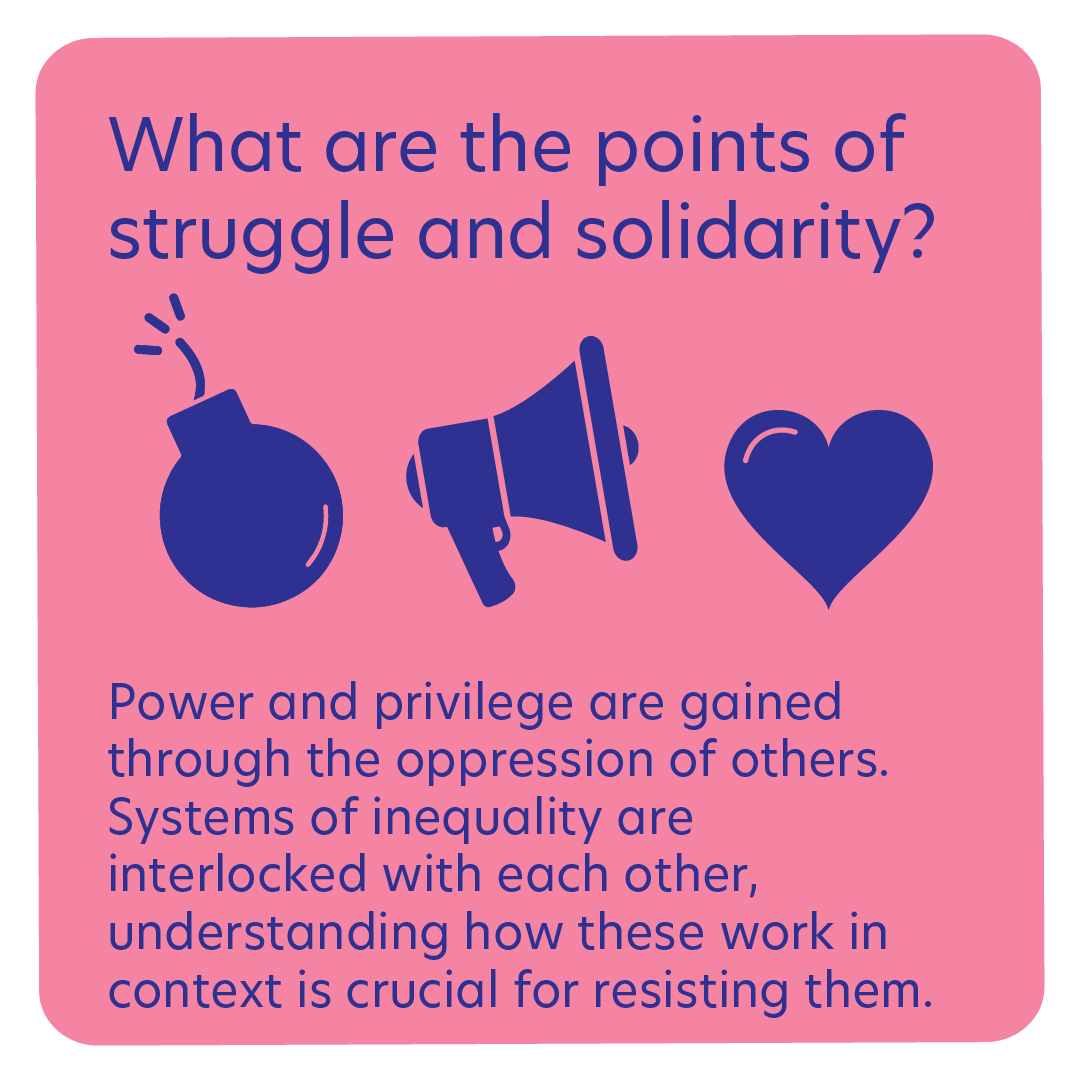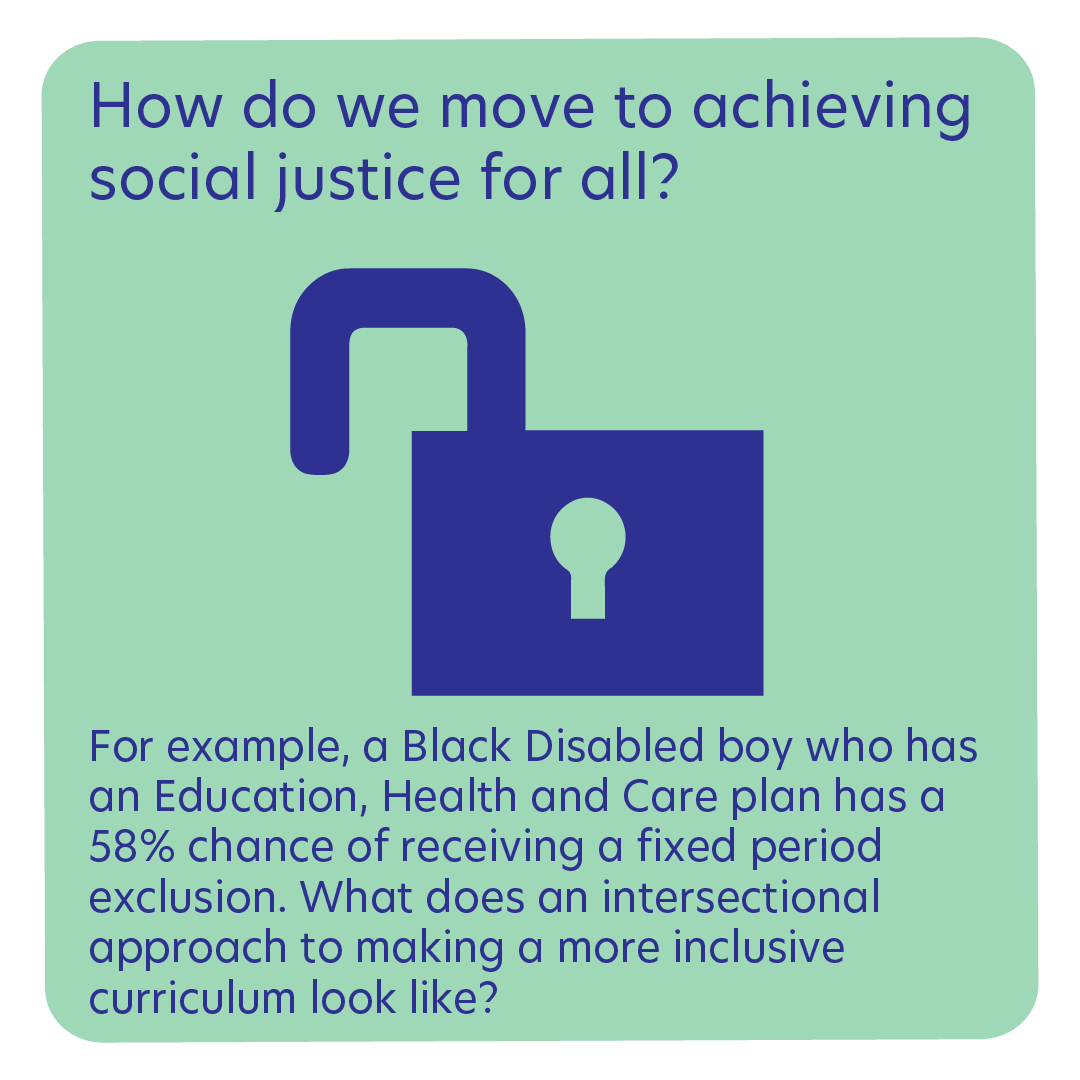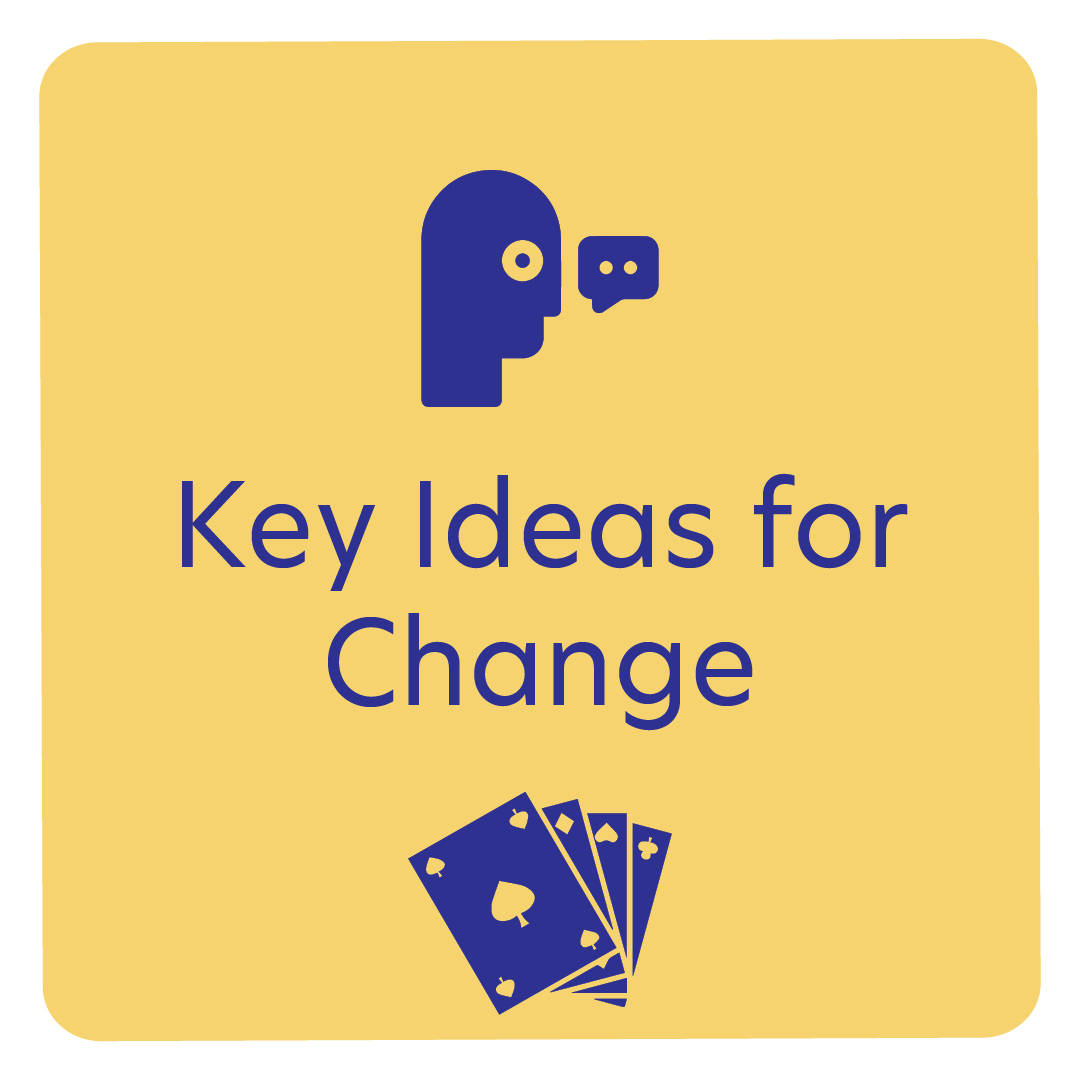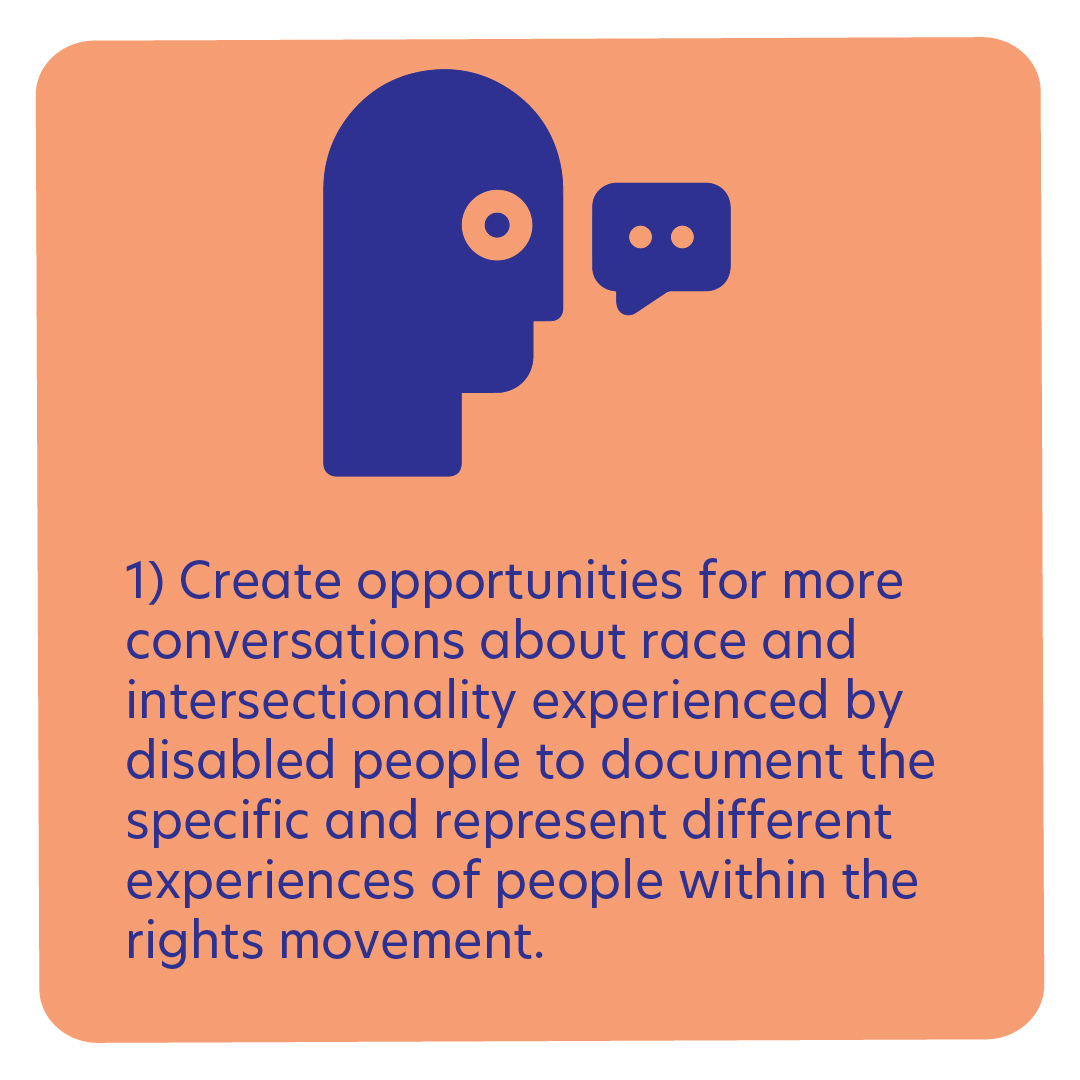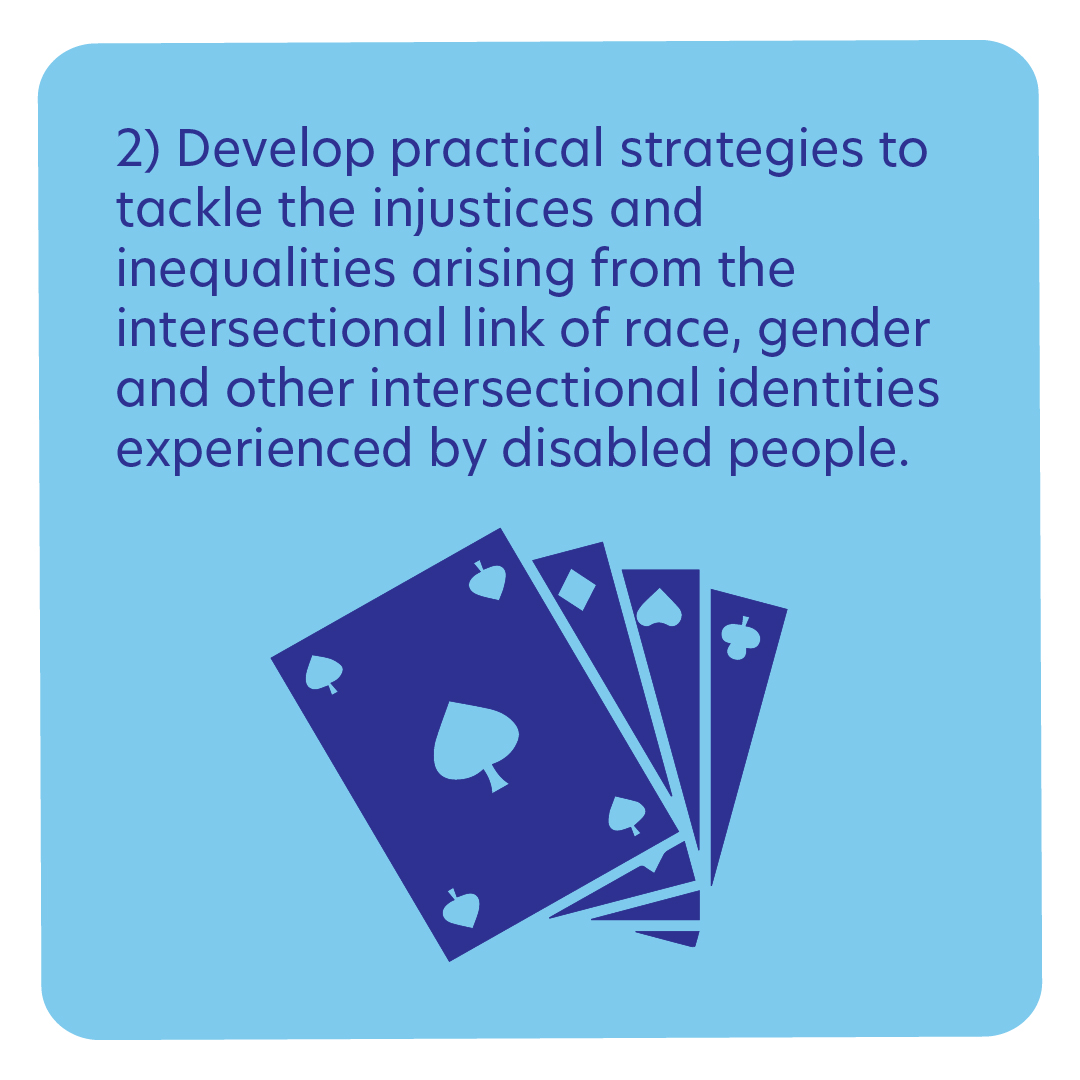Racial and intersectional inequality, and under-representation of people of colour in Disabled People’s Organisations
‘You can’t get rid of one oppression without getting rid of all of them’
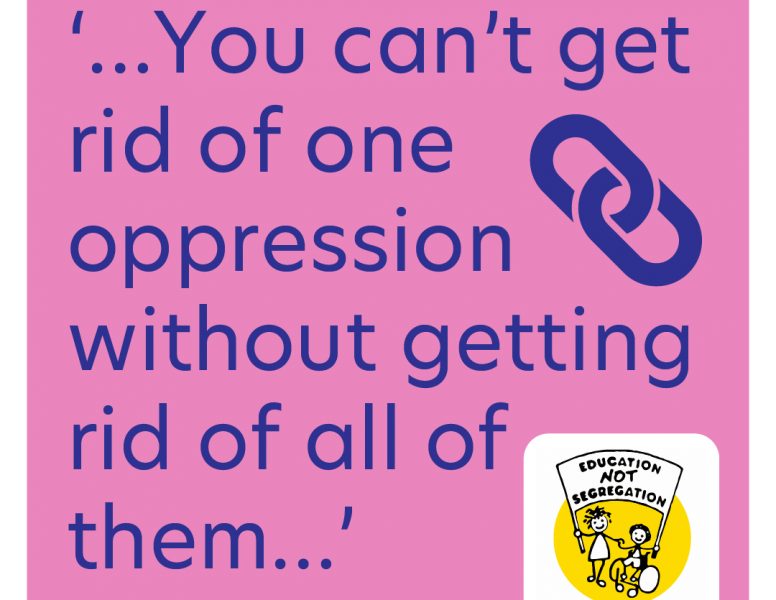
This toolkit includes visual minutes from a series of discussion groups in 2021 by ALLFIE’s Disabled Black Lives Matter pressure group.
Contents
- Key concepts
- Key questions
- Key ideas for change
1. Key concepts
Racism
Oppression, injustice, inequality, abuse, violence against people who share characteristics, because of: skin colour, cultural backgrounds, faith or life style, though definitions are blurry and politically contested.
Disablism
Oppression against disabled people. Disability is often used to indicate a broken, flawed body or mind, though many disabled people assert a social model of disability that identifies social barriers as disabling, not their impairments or medically defined conditions.
Oppression
Discrimination or inequality resulting from different treatment or responses. This can be big and small, fatal and limiting, structural and interactional. Creates exclusion, negative outcomes and prevents individuals and groups from social participation.
White privilege
Having greater access to power and resources than black people in the same situation.
Micro-aggression
Forms of violence and oppression occurring in the everyday towards someone on the basis of their identity or other characteristics. Includes, Micro-assault: explicit discriminatory actions; Microinsult: demeaning a person’s identity, often subtly and unknown by the perpetrator; Micro-invalidation: dismissing the feelings, or experiences of a person belonging to a particular group.
Intersectionality
A way of looking at the combination of a persons’ identities that can result in forms of discrimination that cannot be reduced to single issue understanding. The consequence cannot be understood as not racial injustice plus disability discrimination, but rather oppression multiplied, and as something experienced in isolation.
Kimberlé Crenshaw suggests three types of intersectionality to understand the experience of oppression:
Structural
– society works to combine and interlock oppressions, so that negative consequences are experienced in multiple ways.
Political
– identities are kept separate and maintained as different within politics.
Representational
– imagery that favours single issues, and maintains negative stereotypes.
Interlocking Oppressions
– Histories of oppression interlock and prop each other up. For example, the exploitation of care workers through low pay and the isolation of disabled people are dependent on each other.
2. Key questions.
What are the points of struggle and solidarity?
Power and privilege are gained through the oppression of others. Systems of inequality are interlocked with each other, understanding how these work in context is crucial for resisting them.
How do we understand who is visible and who has the power?
Who is privileged? Who is erased? Whose voice is missing? And how do we enable, share and give power away?
How do we move to achieving social justice for all?
For example, a Black Disabled boy who has an Education, Health and Care plan has a 58% chance of receiving a fixed period exclusion. What does an intersectional approach to making a more inclusive curriculum look like?
3. Key ideas for change
1) Create opportunities for more conversations about race and intersectionality experienced by disabled people to document the specific and represent different experiences of people within the rights movement.
2) Develop practical strategies to tackle the injustices and inequalities arising from the intersectional link of race, gender and other intersectional identities experienced by disabled people
3) Challenge default thinking, combat oppression and microaggression in the everyday life, focusing on inclusion of all people as the goal.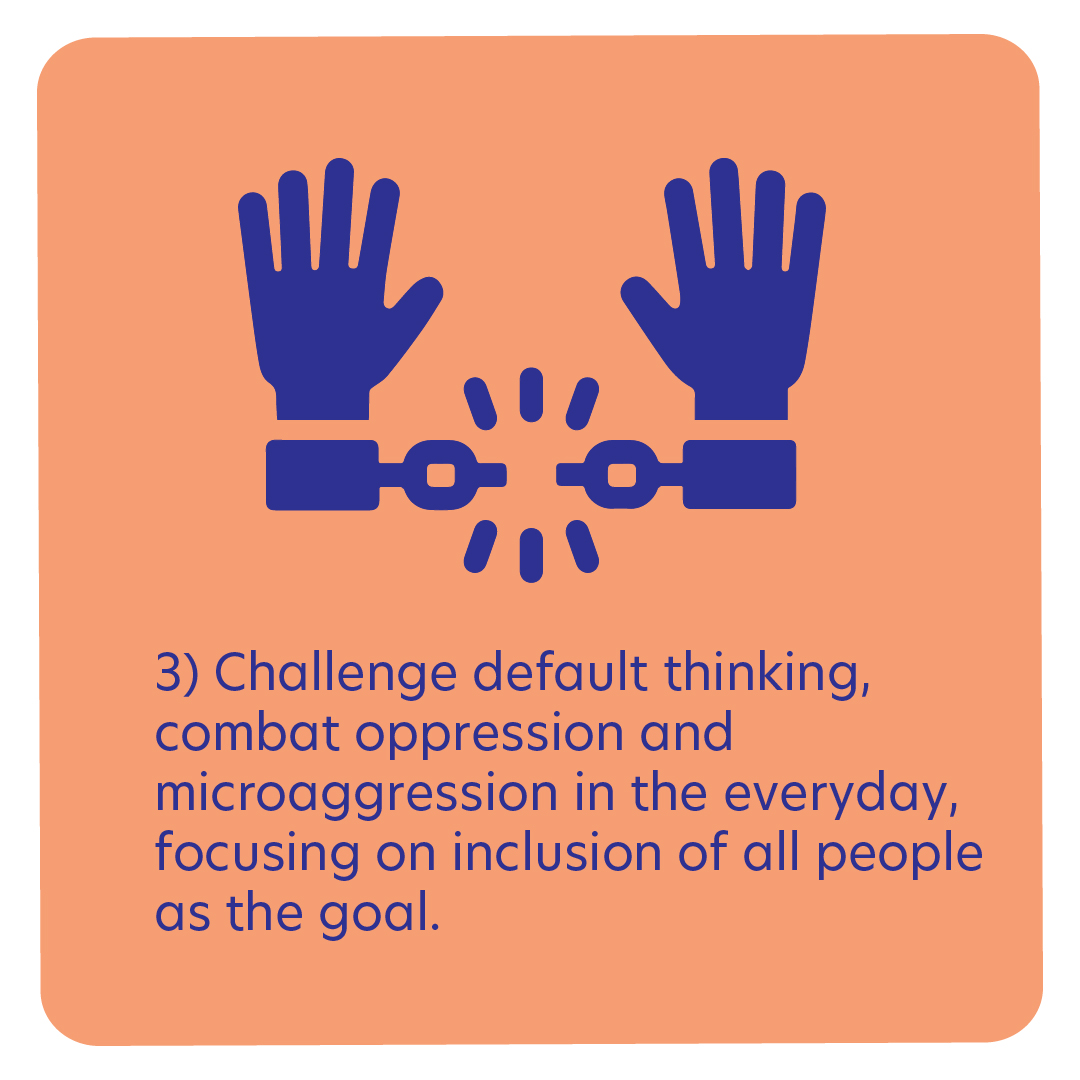
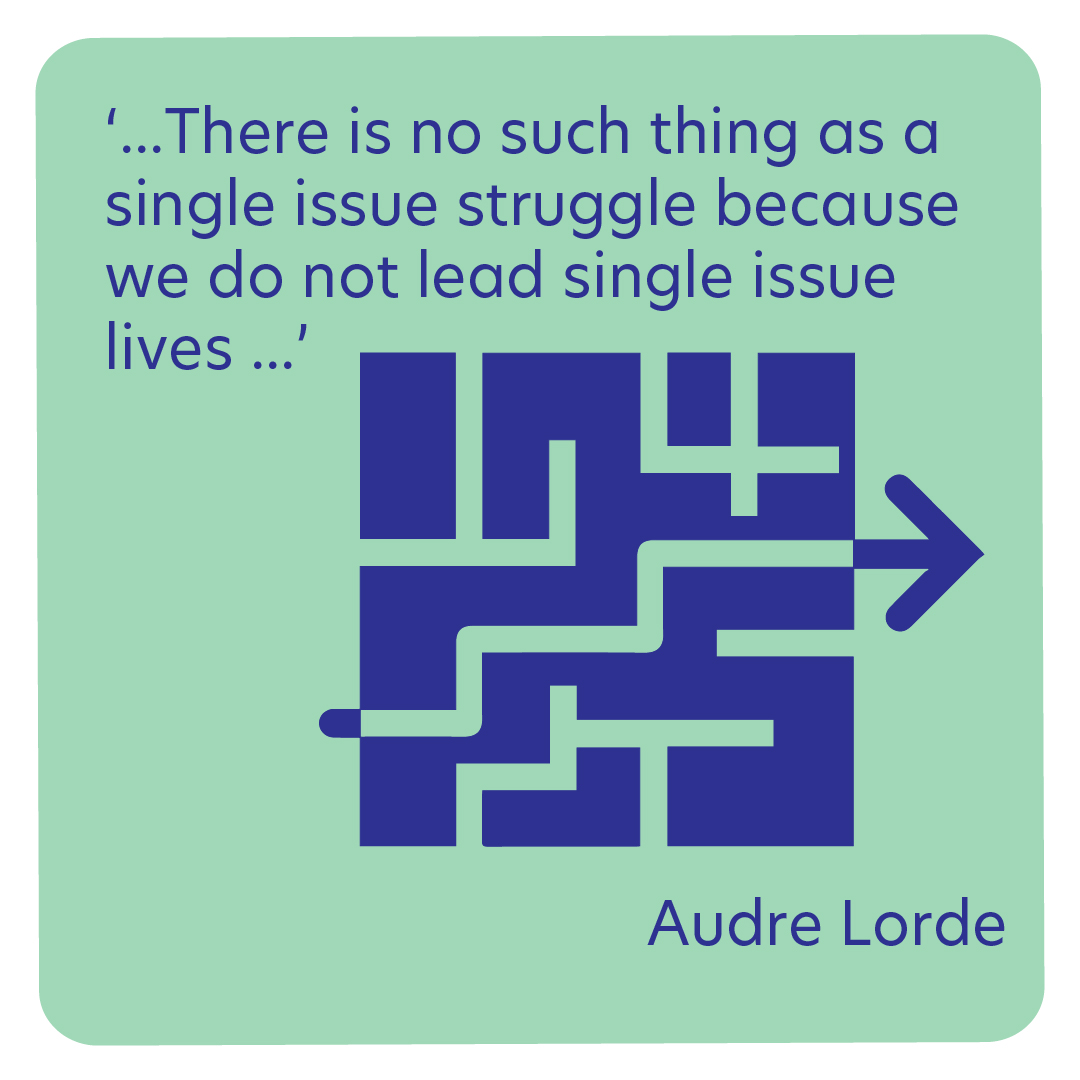
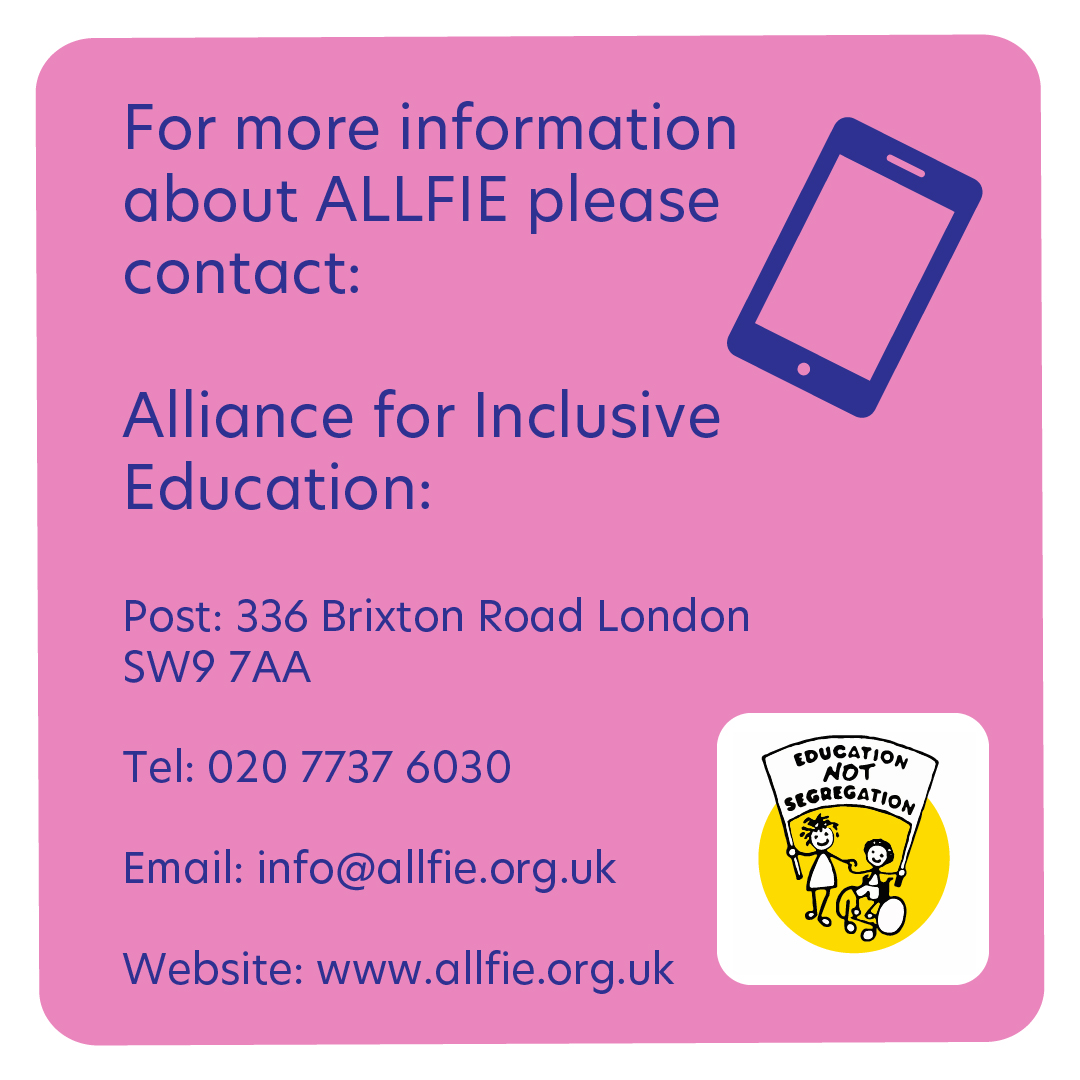
![Allfie [logo]](https://www.allfie.org.uk/wp-content/themes/allfie-base-theme/assets/img/allfie-logo-original.svg)

